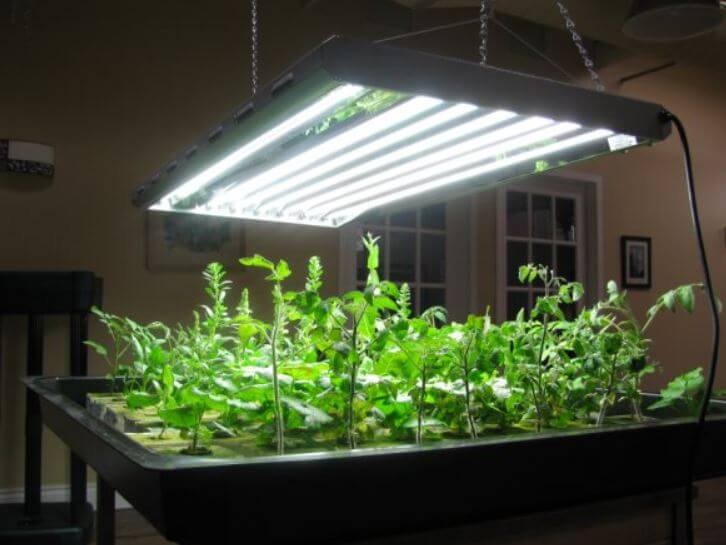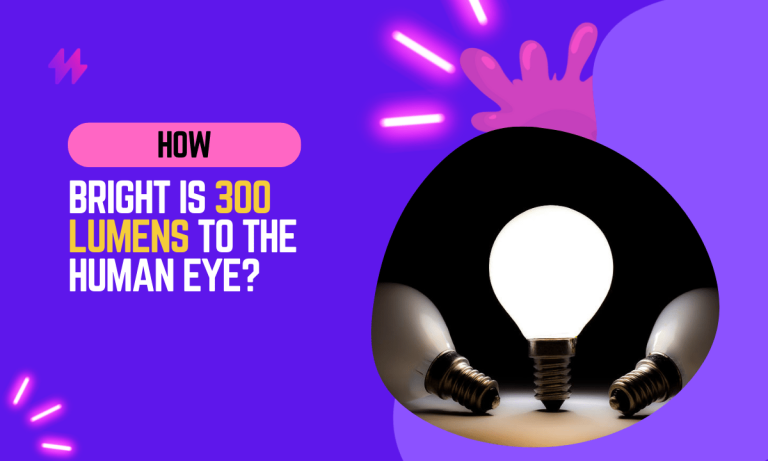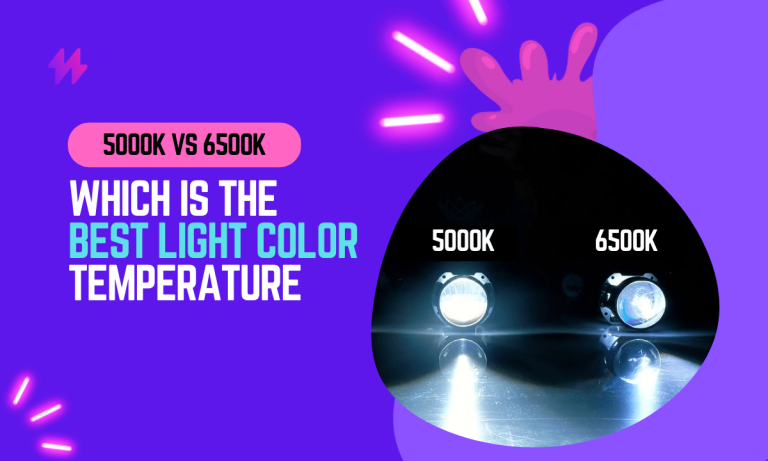Is 4000K LED Good for Plants? Comprehensive Guide

When it comes to cultivating healthy and thriving plants, proper lighting plays a crucial role. In recent years, LED technology has revolutionized indoor gardening by providing efficient and customizable lighting solutions. Among the various LED options available, 4000K LED lights have gained significant attention. But the question remains: are 4000K LED lights good for plants?
Whether you are an avid indoor gardener or a novice plant enthusiast, this guide will equip you with the knowledge needed to make informed decisions regarding lighting solutions for your plants.
So let’s shed some light on the subject and discover if 4000K LED lights truly have what it takes to nourish our leafy companions and help them flourish.
In determining whether 4000K LED lights are good for plants, one must consider how they affect plant growth and development. These lights can be particularly beneficial for certain plants, as they strike a balance that promotes both vegetative and flowering stages, making them suitable for crops like tomatoes and other vibrant plants. Using 4000K LED bulbs can enhance plant hormones and promote biomass growth while ensuring optimal health for seedlings and mother plants alike. By choosing the right light source, gardeners can successfully support plant survival and encourage productive plants throughout their cultivation goals.
Is 4000K LED Good for Plants? Understanding Its Role in Plant Growth

The role of light in plant growth is fundamental and irreplaceable. Light is essential for a process called photosynthesis, which is the primary means by which plants produce energy and synthesize the organic compounds they need to grow. Without adequate light, plants cannot carry out photosynthesis effectively, resulting in stunted growth, weak stems, and poor overall health.
Photosynthesis is a complex biochemical process that occurs in specialized organelles called chloroplasts, primarily located in a plant’s leaves. During photosynthesis, plants convert light energy into chemical energy in the form of glucose (sugar) through a series of interconnected reactions.
The process of photosynthesis can be summarized in the following steps:
- Absorption of Light: Chlorophyll and other pigments in the plant’s cells absorb light energy from the sun. Chlorophyll, which gives plants their green color, is particularly efficient at capturing light in the blue and red regions of the electromagnetic spectrum.
- Conversion of Light Energy: The absorbed light energy is used to power a series of chemical reactions that convert carbon dioxide (CO2) and water (H2O) into glucose and oxygen (O2). This process is known as carbon fixation.
- Synthesis of Organic Compounds: The glucose produced during photosynthesis serves as the building block for various organic compounds necessary for plant growth and development. These include carbohydrates, proteins, lipids, and nucleic acids.
- Energy Storage: Excess glucose not immediately utilized by the plant is stored in various forms, such as starch, within specialized storage structures like roots, tubers, or fruits. This stored energy can be mobilized when needed, such as during periods of limited light availability.
In addition to providing the energy needed for growth and development, light also influences other critical plant processes:
- Photomorphogenesis: Light plays a vital role in shaping plant morphology, including stem elongation, leaf expansion, and flower development. Different wavelengths of light, such as blue and red, can trigger specific growth responses in plants.
- Photoperiodism: Many plants possess an internal clock that allows them to sense and respond to changes in day length or photoperiod. This mechanism influences crucial developmental stages, such as flowering, dormancy, and seasonal growth patterns.
- Directional Growth: Plants can detect the direction of light and adjust their growth accordingly. This phenomenon, known as phototropism, enables plants to optimize light absorption by growing towards a light source or reorienting their leaves.
Also read: How to Soften LED lights for mood lighting?
Light is vital for the effective growth and development of plants, influencing everything from photosynthesis to plant height. To achieve optimal results in agricultural production, understanding the specific light requirements for crops like tomato plants and other vibrant plants can drastically enhance overall plant growth and productivity.
The Spectrum and Effects of 4000K LED Lights on Plant Growth
In terms of the spectrum, 4000K LED lights produce a balanced combination of blue and red wavelengths, with a moderate presence of green and yellow wavelengths.
The blue wavelengths, which typically range from approximately 400 to 500 nanometers (nm), are essential for promoting vegetative growth, compact foliage, and strong stems. Blue light plays a significant role in regulating plant morphology, including leaf development, chlorophyll production, and phototropism.
On the other hand, the red wavelengths, ranging from approximately 600 to 700 nm, are crucial for stimulating flowering, fruiting, and overall plant reproductive processes. Red light is necessary for triggering the transition from the vegetative phase to the reproductive phase in many plant species.
While 4000K LED lights primarily emit blue and red wavelengths, they also encompass a broader spectrum that includes green and yellow wavelengths. Green light, ranging from approximately 500 to 600 nm, plays a role in leaf development and canopy penetration. Additionally, green light can contribute to overall plant health and vitality by aiding in the regulation of photosynthesis and promoting efficient energy transfer within the plant.
To optimize the use of 4000K LED lights for plant growth, it is important to consider supplemental lighting, combining it with other spectrums such as warmer (red-rich) or cooler (blue-rich) lights to provide a more comprehensive and tailored light spectrum.
You may also like: LED Light Colors, What They Mean, And Where To Use Them?
Using 4000K LED bulbs can significantly influence specific plant growth, particularly in crops such as tomatoes and several plant species that thrive under balanced lighting conditions. The ability of these bulbs to enhance plant hormones and promote biomass makes them an excellent choice for ensuring the overall plant development and productivity during both the vegetative and flowering stages.
Is 4000K LED Light Effective for Plant Growth? | Research and Studies

Research and studies on the effects of 4000K LED lights on plant growth have been conducted to understand the suitability and potential benefits of this specific light spectrum.
Research and studies on the effects of 4000K LED lights on plant growth have been conducted to understand the suitability and potential benefits of this specific light spectrum. When used correctly, these lights can support the thriving of both long-day and short-day plants, ensuring that their plant cells receive the necessary energy for sustainable growth. Additionally, the effectiveness of using 4000K LED as a light source can lead to improved chlorophyll a and b production, which is crucial for healthy foliage and productive plants during their respective growing stages.
Effect of 4000K LED Lights on Vegetative Growth in Plants
- Research has shown that 4000K LED lights can promote healthy vegetative growth in plants. They provide a balanced spectrum that includes blue light, which stimulates compact foliage and strong stem development.
- Studies have demonstrated that plants grown under 4000K LED lights exhibit increased leaf area, higher leaf chlorophyll content, and improved biomass accumulation compared to plants grown under other lighting spectra.
Flowering and Reproductive Processes: Understanding Their Importance for Plant Growth Using 4000K LED Lights
- The red component of the 4000K LED light spectrum plays a significant role in triggering flowering and promoting reproductive processes in plants.
- Several studies have reported successful induction of flowering in various plant species, including ornamental plants and crops, when exposed to 4000K LED lights.
- Additionally, 4000K LED lights have been found to enhance flower quality, such as increased petal size, vibrant colors, and prolonged flower longevity.
Yield and Crop Performance: Evaluating the Impact of Light on Plant Growth
- Studies investigating the effects of 4000K LED lights on crop yield have shown promising results.
- For certain crops, such as leafy greens and herbs, 4000K LED lights have been found to improve growth rates and enhance yield compared to traditional lighting sources.
- Research has also highlighted the energy efficiency and cost-effectiveness of 4000K LED bulbs, making them a viable option for commercial crop production.
Evaluating the Suitability of 4000K LED Lights for Optimal Plant Growth

While 4000K LED lights offer a balanced spectrum that includes blue and red wavelengths, their effectiveness may vary depending on the specific needs of different plants. Here are some key aspects to consider when evaluating the suitability of 4000K LED lights for plant growth:
When assessing the impact of 4000K LED lights on various plant species, it is essential to recognize their role in regulating plant architecture, which can influence overall plant growth responses and health. Moreover, for successful harvests, one should align the choice of grow lights, including LED grow lights, with the specific garden needs and growth stages of different plants to ensure robust and vibrant flora.
Light Requirements of Plant Species: Understanding the Impact on Growth Performance
Different plant species have varying light requirements. Some plants thrive under higher blue light intensity, while others may require more red light for flowering and fruiting. Research the light preferences of the specific plants you are growing to determine if the spectrum provided by 4000K LED lights aligns with their needs.
When selecting the appropriate lighting for your garden, it’s important to consider how various light colors can influence different plant processes. Furthermore, 4000K LED lights serve as an effective choice for enhancing growth in seedlings and mother plants by supporting chlorophyll production, particularly chlorophyll b, to ensure robust and bountiful plants.
Growth Stages: Understanding Light’s Impact on Plant Development | The Role of 4000K LED Lights
Plants go through different growth stages, including vegetative growth, flowering, and fruiting. Each stage may require a specific light spectrum to optimize growth and development. Assess whether the 4000K LED spectrum provides the necessary wavelengths for the specific growth stage you are targeting.
When evaluating the effectiveness of 4000K LED lights for various plant species, it’s essential to understand how certain plants respond to light spectrums during different growth stages. Additionally, using appropriate growing lights can significantly enhance plant characteristics, support the defense mechanisms, and ensure a successful grow in both agricultural settings and home gardens.
Optimizing Plant Growth with Supplemental Lighting for Enhanced Performance
In some cases, using 4000K LED lights as a standalone lighting source may not be sufficient. Supplemental lighting, such as warmer (red-rich) or cooler (blue-rich) lights, can complement the 4000K spectrum and provide a more tailored light environment. Consider if additional lighting sources are necessary to meet the specific requirements of your plants.
Find out How To Check the Color Temperature Of LED Light.
When determining the best lighting for your garden, remember that the color spectrum plays a crucial role in plant development, especially in stages like flowering time and plant survival. Utilizing a grow lights collection that includes both 4000K LED lights and full-spectrum grow lights can effectively meet the diverse needs of various plants, ensuring healthy growth and vibrant flora, including arabidopsis thaliana seedlings.
Optimal Light Intensity and Duration for Plant Growth: Key Considerations
The intensity and duration of light exposure are crucial for plant growth. Ensure that the 4000K LED lights provide adequate light intensity for your plants. Additionally, consider the duration of light exposure required for different growth stages and adjust the lighting schedule accordingly.
The intensity and duration of light exposure are indeed crucial for plant growth. By effectively utilizing 4000K LED lights, gardeners can ensure that long-day plants thrive during their flowering stage, while supporting vital processes such as chlorophyll production and root growth, ultimately leading to the robust health of the plant canopy and optimal cultivation goals.
Plant-Specific Responses: Understanding How Different Plants React to Lighting Conditions
Evaluate the response of your plants to 4000K LED lights during trial periods. Observe their overall growth, leaf development, flowering patterns, and fruit production. Assess whether the plants exhibit desired growth characteristics and whether the 4000K LED lights meet their specific needs effectively.
To determine the benefits of 4000K LED lights for your plants, closely monitor their responses during trial periods to gauge growth and flowering. Such evaluations will help you understand if these lights effectively meet the specific needs of your flora, especially when considering the influence of other light sources like fluorescent bulbs and full-spectrum white LEDs.
Expert Guidance on Plant Growth Experimentation: Understanding Light Requirements with 4000K LED
Seek advice from horticulturists, plant scientists, or experienced indoor gardeners who have worked with similar plant species. They can provide valuable insights and recommendations based on their expertise and experience. Experimentation is also key to determining the suitability of 4000K LED lights for your specific plants. Test different lighting configurations, observe plant responses, and make adjustments as needed.
Also read: The Difference between 4000K and 5000K LED Color Temperature
Horticulturists often recommend using a particular grow light spectrum that includes 4000K LED lights, as they can greatly impact plant growth and development. Your plants’ health, which includes the integrity of plant tissues and chlorophyll production, can significantly improve when you provide a suitable light regime tailored for each plant stage.
Final Thoughts on Plant Growth and 4000K LED Lighting
In conclusion, understanding the effects of 4000K LED lighting on plant growth is crucial for optimizing indoor gardening strategies. The 4000K color temperature, which emits a bright white light that closely mimics natural daylight, is particularly effective for promoting healthy plant growth. This light spectrum can significantly enhance photosynthesis, leading to vigorous growth and improved health of the plants. It strikes a balance between the blue and red wavelengths, providing adequate support for both vegetative growth and flowering stages, which makes it a versatile choice for a wide range of plant species. Whether for commercial agricultural setups or residential indoor gardens, 4000K LEDs offer a practical solution that supports the development of plants from seedling to maturity.
Moreover, integrating 4000K LED lighting into plant cultivation systems can lead to more sustainable and controlled growth environments. This lighting not only helps in reducing energy consumption due to its efficiency but also decreases the need for chemical inputs by promoting stronger, more resilient plant growth. For gardeners and growers looking to maximize their yield and plant health, adapting their lighting systems to include 4000K LEDs can be a game-changer. Additionally, these lights provide excellent visibility for maintenance tasks in the grow area, making it easier to monitor plant health and spot potential issues early. By choosing 4000K LED lights, cultivators can create a conducive environment for their plants to thrive, while also ensuring that their gardening practices are both energy-efficient and environmentally friendly.
Is 4000K LED Good For Plants | Benefits of 4000K LED Lights for Plants
The question of whether 4000K LED lights are good for plants often revolves around their capacity to enhance growth through effective photosynthesis. These lights produce a balanced spectrum that mimics natural sunlight, contributing to the development of chlorophylls and other pigments essential for plant health. The whiter hues of 4000K bulbs tend to support the main growth phases, aiding in the establishment of robust plant stems and nearby vegetation. For seedlings, the 4000K range is often deemed sufficient, with discussions in planted tank forums highlighting its effectiveness in fostering flower development and strengthening plant defense mechanisms. While colors like orange light can benefit certain stages, the stability provided by 4000K LEDs allows for consistent growth, making them a valuable option for those seeking energy efficiency with LEDgrow lights. However, it is crucial to understand that while they serve many functions, comparing them to higher Kelvin options, such as around 6500K to 6700K, reveals some limitations in terms of light spectrum intensity and overall plant growth potential.
Is 4000K LED Good for Plants | Enhanced Photosynthesis and Growth Rates
The question of whether 4000K LED lights are good for plants is often raised by indoor gardeners and horticulturists. These whiter bulbs provide a balanced spectrum that encourages photosynthesis and stimulates plant growth. The light emitted from 4000K LEDs is sufficient to protect plants while promoting healthy development, particularly beneficial for various flora. As many indoor growers wonder if this is enough to grow seedlings, it becomes clear that the right light spectrum significantly affects plant growth in a controlled environment.
While 4000K lights can effectively support flora in moderate light conditions, they may not fully replace the benefits offered by more specialized lighting options. For plants that thrive in shadier environments, the effectiveness of 4000K white bulbs may vary. Understanding how 4000K lighting interacts with different plant needs is essential, especially for those focused on maximizing growth potential under artificial conditions. Therefore, exploring the impact of this versatile spectrum can be invaluable for determining the best lighting strategies for all types of plants.
Energy Efficiency and CostEffectiveness
The energy efficiency of 4000K LED lights makes them a favorable option for many growers. Is 4000K LED good for plants? Yes, this light spectrum provides a balanced mix of blue and red wavelengths, promoting healthy flora sun growth. It supports photosynthesis effectively, allowing plants to thrive without excessively high energy consumption. For those wondering, “Is this enough to grow seedlings?” the answer often lies in the ability of 4000K LEDs to offer the right amount of light intensity while staying economical.
Cost-effectiveness is another significant advantage of using 4000K LEDs. The initial investment may be higher than traditional bulbs, yet their long lifespan and low energy usage contribute to substantial savings over time. Growers can reduce their electricity bills while providing adequate light for their plants, including those in shaded areas. As the interest in sustainable growing practices increases, many are finding that the question, “Is 4000K LED good for plants?” aligns with both their ecological concerns and financial goals.
Comparing 4000K LED Lights to Other Spectra
The question of whether 4000K LED lights are good for plants is essential for indoor gardening enthusiasts. This spectrum provides a balanced light condition that promotes healthy foliage and fosters robust growth. Plants under 4000K lighting experience enhanced photosynthesis due to the availability of both blue and red wavelengths, vital for their development. While comparing 4000K LED lights to other spectra, it’s important to note that lower Kelvin temperatures may primarily benefit certain flowering plants, whereas higher Kelvin lights often cater to specific growth stages. Understanding these differences helps gardeners make informed choices about light fixtures that best suit their plant needs.
Advantages of 4000K Over Lower Kelvin Temperatures
4000K LED lights create a balanced spectrum that closely resembles natural daylight, making them an excellent choice for promoting plant health. This spectrum allows plants to effectively utilize both red and blue wavelengths, which are essential for photosynthesis. As a result, many growers question, “Is 4000K LED good for plants?” The answer leans towards the affirmative, as this light can enhance growth rates and lead to more vigorous plant development.
Lower Kelvin temperatures often emit a more yellow or orange light, which may not provide the optimal conditions for growth. While these lights can work for certain plants, they generally limit the spectrum to primarily red wavelengths. This can hinder overall growth and development. Thus, many horticulturists find themselves asking, “Is 4000K LED good for plants?” The versatility and broad spectrum of 4000K LEDs make them superior for a wider range of plant types compared to the more limited lower Kelvin options.
Limitations of 4000K Compared to Higher Kelvin Lights
While 4000K LED lights are beneficial, they may not fully meet the needs of all plant types, especially those requiring specific light spectra for optimal growth. Is 4000K LED good for plants? The answer varies depending on the species. Higher Kelvin lights, such as 5000K or 6500K, provide a cooler light that can better support the photosynthesis process for certain plants, encouraging quicker growth and more vigorous health.
Another limitation of 4000K lighting is its reduced ability to promote flowering and fruiting phases in many plants. While 4000K LED lights do offer a balanced spectrum, they may lack the intensity of the blue and red wavelengths found in higher Kelvin lights. This can hinder the blooming process for flowering plants and yield in fruit-bearing varieties. Assessing whether 4000K LED is good for plants requires consideration of specific plant types and their unique lighting needs.






